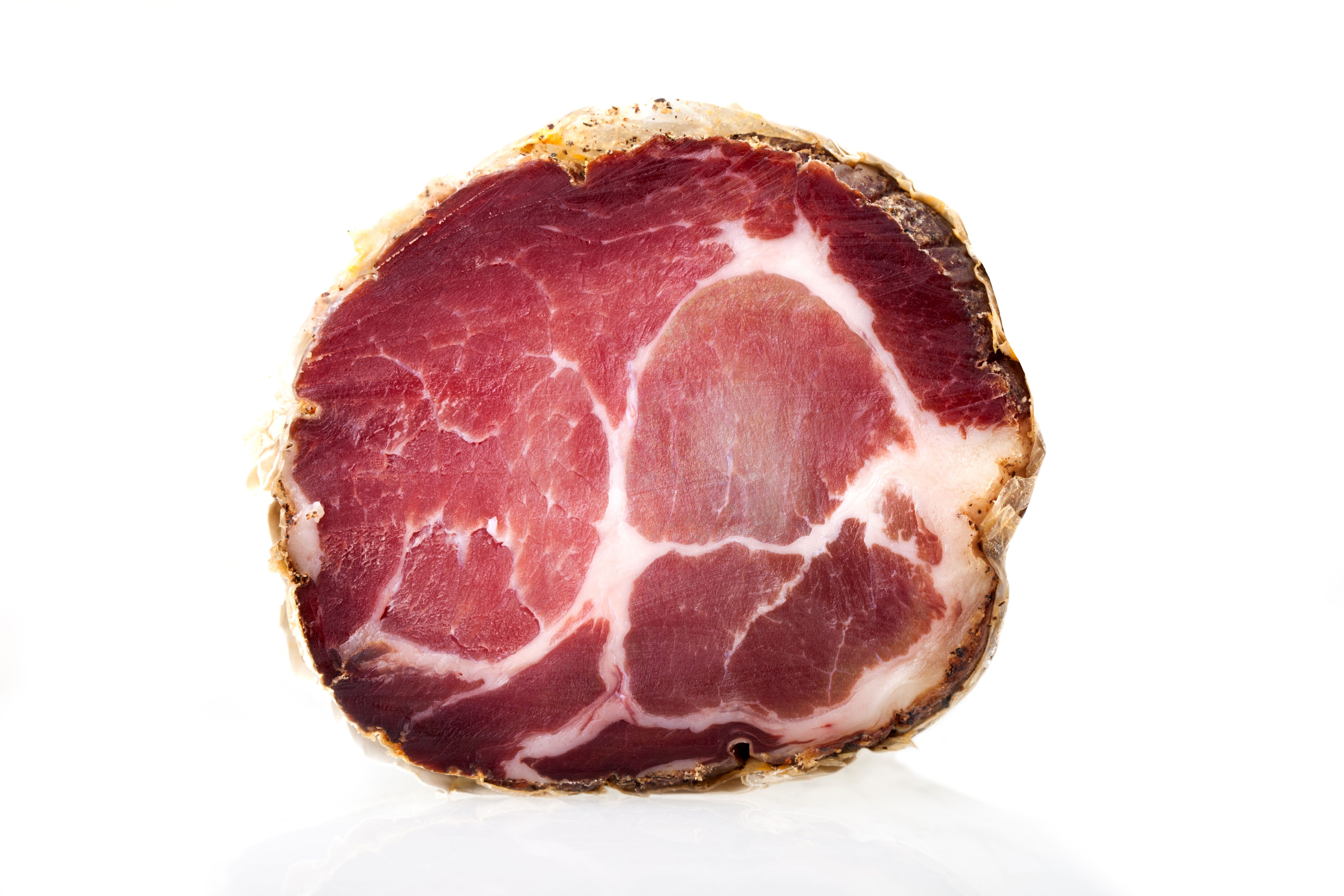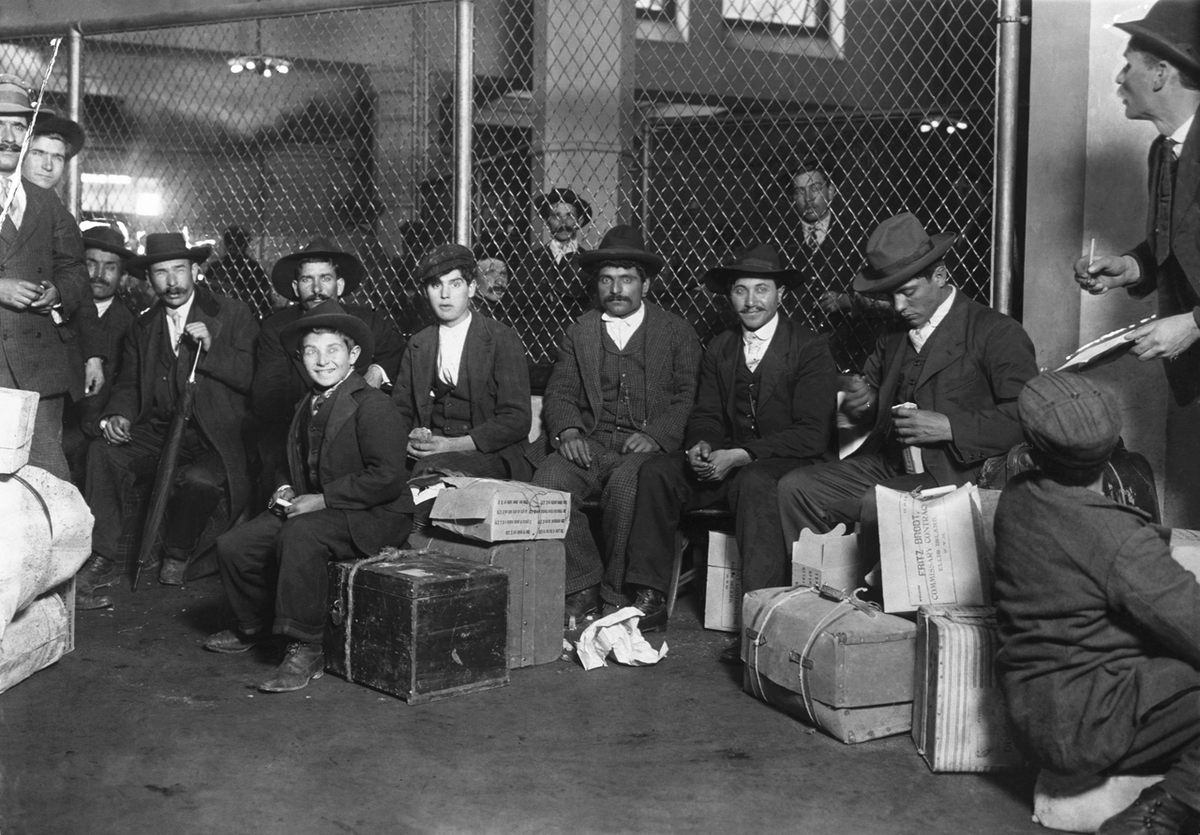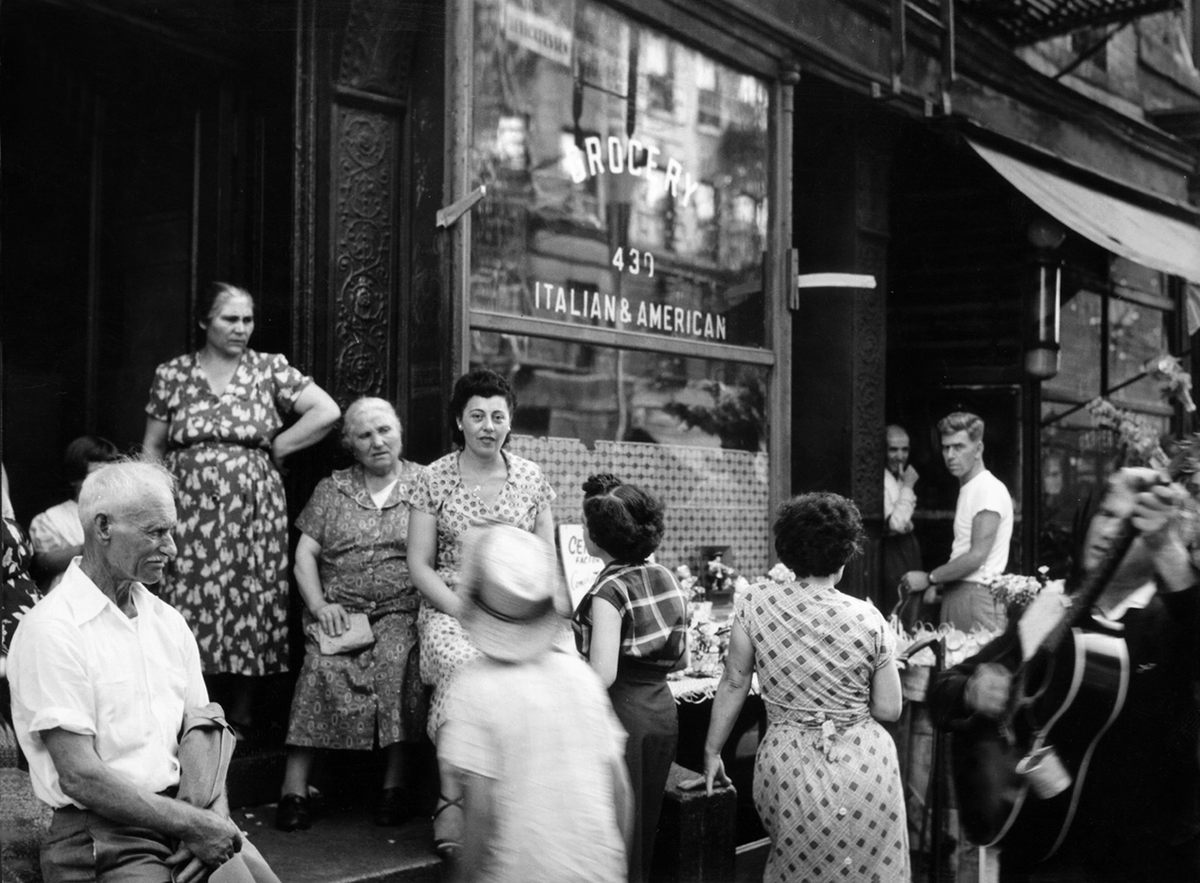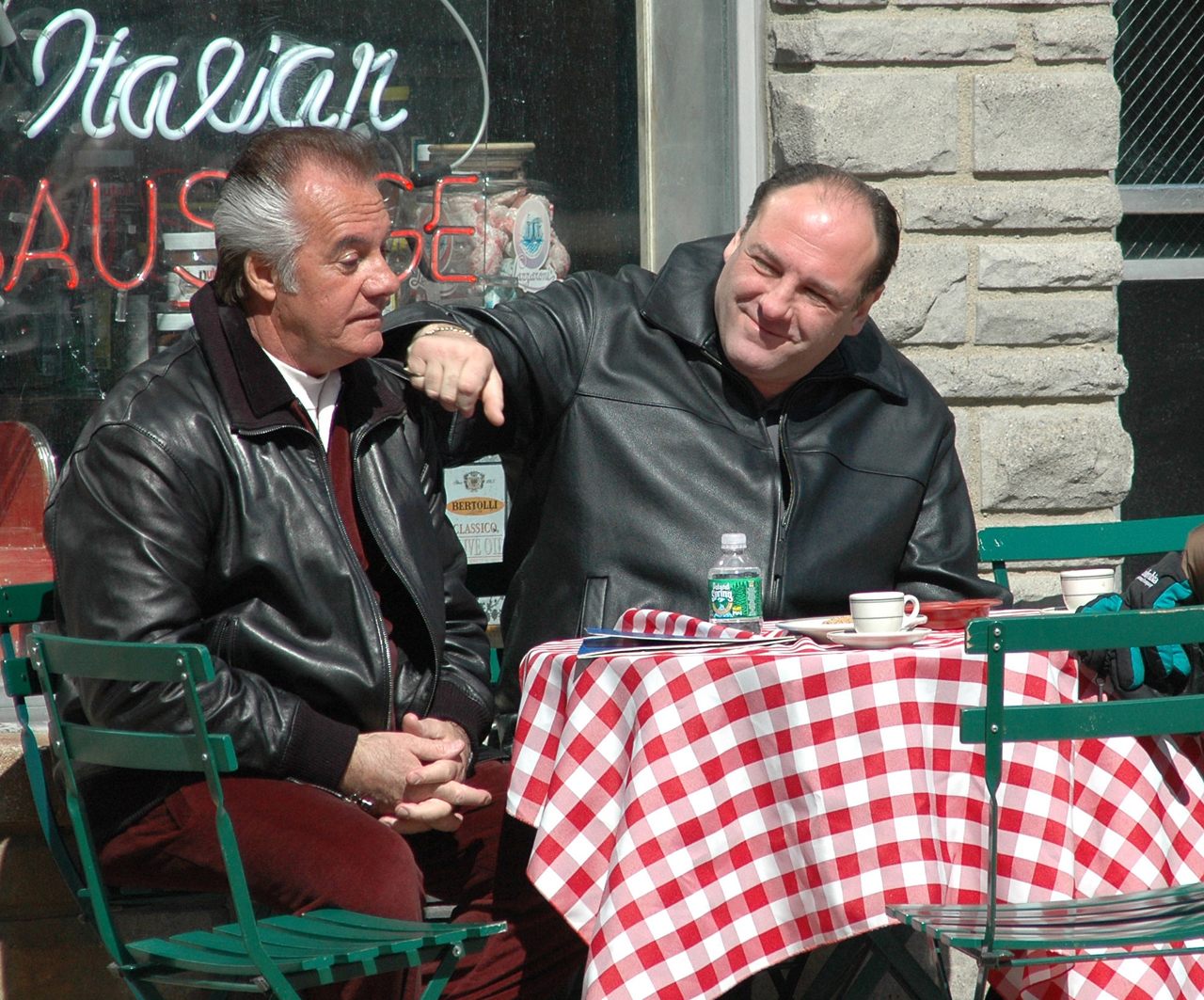How Capicola Became Gabagool: The Italian New Jersey Accent, Explained
A linguistic exploration.
“Don’t eat gabagool, Grandma,” says Meadow Soprano on an early episode of The Sopranos, perhaps the most famous depiction of Jersey Italian culture in the past few decades. “It’s nothing but fat and nitrates.” The pronunciation of “gabagool,” a mutation of the word “capicola,” might surprise a casual viewer, although it and words like it should be familiar to viewers of other New Jersey–based shows like Jersey Shore and The Real Housewives of New Jersey, where food often drives conversation. The casts are heavily Italian-American, but few of them can actually speak, in any real way, the Italian language. Regardless, when they talk about food, even food that’s widely known by the non-Italian population, they often use a specific accent.
And it’s a weird one. “Mozzarella” becomes something like “mutzadell.” “Ricotta” becomes “ree-goat.” “Prosciutto” becomes “pruh-zhoot.” There is a mangling of the language in an instantly identifiable way: Final syllables are deleted, certain consonants are swapped with others, certain vowels are mutated in certain places.
Most immigrant groups in the United States retain certain words and phrases from the old language even if the modern population can’t speak it. But for people outside those groups, and even, often, inside them, it’s next to impossible to pick out a specific regional accent in the way a Jewish American says “challah” or a Korean-American says “jjigae.” How can someone who doesn’t speak the language possibly have an regional accent?

Yet Italian-Americans do. It’s even been parodied. On an episode of Kroll Show, comedian Nick Kroll’s character Bobby Bottleservice, a Mike “The Situation” Sorrentino–type, describes his lunch in this thick accent, eliminating the final syllable of each item. “Cap-uh-coal,” he says, pointing at capicola. “Mort-ah-dell,” he says, as the camera pans over a thin, pale arrangement of mortadella. “Coca-coal,” he finishes, as the camera moves over to a glass of Coke. “Capicola,” made famous in its mutation by The Sopranos, gets even more mutated for comedic effect on The Office, where it becomes “gabagool.”
I spoke to a few linguists and experts on Italian-American culture to figure out why a kid from Paterson, New Jersey, who doesn’t speak Italian, would earnestly ask for a taste of “mutzadell.” The answer takes us way back through history and deep into the completely chaotic world of Italian linguistics.
“One thing that I need to tell you, because this is something that is not clear even for linguists, let alone the layperson—the linguistic situation in Italy is quite complicated,” says Mariapaola D’Imperio, a professor in the linguistics department at Aix-Marseille University who was born in Naples and studied in Ohio before moving to France. The situation is so complicated that the terms used to describe pockets of language are not widely agreed upon; some use “language,” some use “dialect,” some use “accent,” and some use “variation.” Linguists like to argue about the terminology of this kind of thing.
The basic story is this: Italy is a very young country made up of many very old kingdoms awkwardly stapled together to make a patchwork whole. Before 1861, these different kingdoms—Sardinia, Rome, Tuscany, Venice, Sicily (they were called different things at the time, but roughly correspond to those regions now)—those were, basically, different countries. Its citizens didn’t speak the same language, didn’t identify as countrymen, sometimes were even at war with each other. The country was unified over the period from around 1861 until World War I, and during that period, the wealthier northern parts of the newly-constructed Italy imposed unfair taxes and, basically, annexed the poorer southern parts. As a result, southern Italians, ranging from just south of Rome all the way down to Sicily, fled in huge numbers to other countries, including the United States.

About 80 percent of Italian-Americans are of southern Italian descent, says Fred Gardaphe, a professor of Italian-American studies at Queens College. “Ships from Palermo went to New Orleans and the ships from Genoa and Naples went to New York,” he says. They spread from there, but the richest pockets of Italian-Americans aren’t far from New York City. They’re clustered in New York City, Long Island, New Jersey, Rhode Island, Connecticut, and in and around Philadelphia.
Yet those Italians, all from southern Italy and all recent immigrants in close proximity to each other in the United States, wouldn’t necessarily consider themselves countrymen. That’s because each of the old Italian kingdoms had their own … well, D’Imperio, who is Italian, calls them “dialects.” But others refer to them in different ways. Basically the old Italian kingdoms each spoke their own languages that largely came from the same family tree, slightly but not all that much closer than the Romance languages, such as French, Spanish, or Portuguese. The general family name for these languages is Italo-Dalmatian. (Dalmatian, it turns out, refers to Croatia. The dog is from there, too.) They were not all mutually comprehensible, and had their own external influences. Calabrian, for example, is heavily influenced by Greek, thanks to a long Greek occupation and interchange. In the northwest near the border with France, Piedmont, with its capital of Turin, spoke a language called Piedmontese, which is sort of French-ish. Sicilian, very close to North Africa, had a lot of Arabic-type stuff in it. I use the past tense for these because these languages are dying, quickly. “Dialects do still exist, but they’re spoken mainly by old people,” says D’Imperio. (Sicilian put up more of a fight than most.)
During unification, the northern Italian powers decided that having a country that speaks about a dozen different languages would pose a bit of a challenge to their efforts, so they picked one and called it “Standard Italian” and made everyone learn it. The one that they picked was Tuscan, and they probably picked it because it was the language of Dante, the most famous Italian writer. (You can see why calling these languages “dialects” is tricky; Standard Italian is just one more dialect, not the base language which Calabrian or Piedmontese riffs on, which is kind of the implication.)
Standard Italian has variations, like any other language, which we’ll call accents. Someone from Sicily would have a Sicilian accent, but when speaking Standard Italian, a person from Milan will, hopefully, be able to understand them, because at a basic level, they’ll be using a language with the same structure and a vocabulary that is mostly identical.

But this gets weird, because most Italian-Americans can trace their immigrant ancestors back to that time between 1861 and World War I, when the vast majority of “Italians,” such as Italy even existed at the time, wouldn’t have spoken the same language at all, and hardly any of them would be speaking the northern Italian dialect that would eventually become Standard Italian.
Linguists say that there are two trajectories for a language divorced from its place of origin. It sometimes dies out quickly; people assimilate, speak the most popular language wherever they live, stop teaching their children the old language. But sometimes, the language has a firmer hold on its speakers than most, and refuses to entirely let go. The Italian dialects are like that.
“I grew up speaking English and Italian dialects from my family’s region of Puglia,” says Gardaphe. “And when I went to Italy, very few people could understand me, even the people in my parents’ region. They recognized that I was speaking as if I was a 70-year-old man, when I was only 26 years old.” Italian-American Italian is not at all like Standard Italian. Instead it’s a construction of the frozen shards left over from languages that don’t even really exist in Italy any more, with minimal intervention from modern Italian.
There’s a spectrum to all this, of course. Somebody, even in their 70s or 80s, who was born in Italy and lived in the United States can still be understood in Italy. But Italian has undergone huge standardization changes in the past few decades, and it’ll be hard for modern Italian speakers to understand them, even harder than if somebody showed up in New York today speaking in 1920s New Yorker “Thoity-Thoid Street” slang and accent.
For whatever reason, foods and curse words linger longer in a disrupted language. I think of my own complete lack of knowledge of Yiddish, with my lousy vocabulary made up entirely of words like blintzes, kugel, kvetch, nudnik, and schmuck. If you can’t eat them or yell them, foreign words don’t often stick around.
Ann Marie Olivo-Shaw, who grew up on and studied the sociolinguistics of Long Island, thinks the various pockets of southern Italian immigrants could understand each other, sort of, a little. (Jersey Italians are not, linguistically, distinct from New York or Rhode Island or Philadelphia Italians when speaking Italian.) Generally being fairly close in proximity, even if they were only speaking similar languages, they would necessarily have some cultural similarities. Culinarily similarities also abound: less meat-heavy, more like Provence or Greece in the use of seafood, vegetables, and even, rare for western Europe, spice. (Capicola and mozzarella are, probably, creations of southern Italy, though there are versions elsewhere and Italians love to argue about who invented what.)
And they shared some qualities linguistically as well. Let’s do a fun experiment and take three separate linguistic trends from southern Italian dialects and combine them all to show how one Standard Italian word can be so thoroughly mangled in the United States.
First: “The features that you’ll find across a lot of these dialects, and one that you still hear a lot in southern Italy today, is vowels at the ends of words are pronounced very very softly, and usually as more of an ‘uh’ vowel,” says Olivo-Shaw. D’Imperio is a little more extreme, calling it “vowel deletion.” Basically, if the final syllable is a vowel? You can get rid of it. Vowel deletion is common in many languages, and is done for the same reason that, sometimes, vowels are added: to make the flow from one word to another more seamless. It’s easiest, in terms of muscle movement, to transition from a vowel to a consonant and vice versa. A vowel to a vowel is difficult. In English, that’s why we have “a” versus “an” in phrases like “a potato” or “an apple.” Some Italian words that would follow food words, such as prepositions or articles, would start with a vowel, and it’s easier to just remove it so you don’t have to do the vowel-to-vowel transition.

The stereotypical Italian “It’s a-me, Mario!” addition of a vowel is done for the same reason. Italian is a very fluid, musical language, and Italian speakers will try to eliminate the awkwardness of going consonant-to-consonant. So they’ll just add in a generic vowel sound—“ah” or “uh”—between consonants, to make it flow better.
Second: “A lot of the ‘o’ sounds will be, as we call it in linguistics, raised, so it’ll be pronounced more like ‘ooh’,” says Olivo-Shaw. Got it: O=Ooh.
And third: “A lot of what we call the voiceless consonants, like a ‘k’ sound, will be pronounced as a voiced consonant,” says Olivo-Shaw. This is a tricky one to explain, but basically the difference between a voiced and a voiceless consonant can be felt if you place your fingers over your Adam’s apple and say as short of a sound with that consonant as you can. A voiced consonant will cause a vibration, and voiceless will not. So like, when you try to just make a “g” sound, it’ll come out as “guh.” But a “k” sound can be made without using your vocal cords at all, preventing a vibration. So “k” would be voiceless, and “g” would be voiced. Try it! It’s fun.
Okay so, we’ve got three linguistic quirks common to most of the southern Italian ancient languages. Now try to pronounce “capicola.”

The “c” sounds, which are really “k” sounds, become voiced, so they turn into “g.” Do the same with the “p,” since that’s a voiceless consonant, and we want voiced ones, so change that to a “b.” The second-to-last vowel, an “o” sound, gets raised, so change that to an “ooh.” And toss out the last syllable. It’s just a vowel, who needs it? Now try again.
Yeah. Gabagool.
If you were to go to southern Italy, you wouldn’t find people saying “gabagool.” But some of the old quirks of the old languages survived into the accents of Standard Italian used there. In Sicily or Calabria, you might indeed find someone ordering “mutzadell.” In their own weird way, Jersey (and New York and Rhode Island and Philadelphia) Italians are keeping the flame of their languages alive even better than Italian-Italians. There’s something both a little silly and a little wonderful about someone who doesn’t even speak the language putting on an antiquated accent for a dead sub-language to order some cheese.
“Language is so much a part of how we identify,” says Olivo-Shaw. “The way we speak is who we are. I think that for Italians, we have such a pride in our ancestry and such a pride in our culture that it’s just kind of an unconscious way of expressing that.”
Correction: An earlier version of the story had the wrong age for Fred Gardaphe.
This story was updated with new images and minor edits on October 25, 2018.











Follow us on Twitter to get the latest on the world's hidden wonders.
Like us on Facebook to get the latest on the world's hidden wonders.
Follow us on Twitter Like us on Facebook